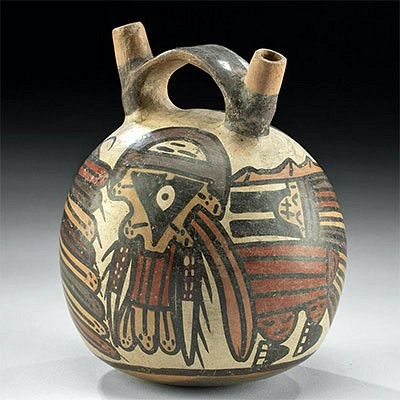11 Fossils Blastoids, Brachiopods, Fern, & Desert Rose
Lot 66a
About Seller
Artemis Gallery
686 S Taylor Ave, Ste 106
Louisville, CO 80027
United States
Selling antiquities, ancient and ethnographic art online since 1993, Artemis Gallery specializes in Classical Antiquities (Egyptian, Greek, Roman, Near Eastern), Asian, Pre-Columbian, African / Tribal / Oceanographic art. Our extensive inventory includes pottery, stone, metal, wood, glass and textil...Read more
Categories
Estimate:
$700 - $1,050
Absentee vs Live bid
Two ways to bid:
- Leave a max absentee bid and the platform will bid on your behalf up to your maximum bid during the live auction.
- Bid live during the auction and your bids will be submitted real-time to the auctioneer.
Bid Increments
| Price | Bid Increment |
|---|---|
| $0 | $25 |
| $300 | $50 |
| $1,000 | $100 |
| $2,000 | $250 |
| $5,000 | $500 |
| $10,000 | $1,000 |
| $20,000 | $2,500 |
| $50,000 | $5,000 |
| $100,000 | $10,000 |
| $200,000 | $20,000 |
About Auction
By Artemis Gallery
Feb 10, 2022
Set Reminder
2022-02-10 10:00:00
2022-02-10 10:00:00
America/New_York
Bidsquare
Bidsquare : Ancient & Ethnographic Art Through The Ages
https://www.bidsquare.com/auctions/artemis-gallery/ancient-ethnographic-art-through-the-ages-8873
Join us for Part Two of a spotlight on two fabulous collections, one from Lumberton, Texas, and the other from Whisnant Gallery in New Orleans. Artemis Gallery info@artemisgallery.com
Join us for Part Two of a spotlight on two fabulous collections, one from Lumberton, Texas, and the other from Whisnant Gallery in New Orleans. Artemis Gallery info@artemisgallery.com
- Lot Description
Ancient Seas, Mississippian to Triassic period, ca. 359.2 to 200 million years ago. A collection of 11 fossils of ancient sea creatures, plants, and minerals which includes: 4 brachiopods, 4 blastoids, a fern, and a desert rose mineral. Three of the blastoids are mounted on a slate matrix and the fern is enclosed in an orange sandstone matrix, while the rest of the fossils are fully excavated and three dimensional. The desert rose is an orange-russet formation of gypsum, which often looks like a cluster of petals or a rose, but it is fully a rock and sand formation and not organic. The blastoids were a type of stemmed sea dwelling echinoderms that had petaloid heads with grooves radiating from the mouth that trapped food. The fern is a partial frond that perhaps comes from the Pecopteris genus of tree ferns. The individual ridges of many of the brachiopod shells are largely intact - these are a type of clam with two shells or valves. Size (largest matrix): 2.25" L x 2" W (5.7 cm x 5.1 cm); (blastoid fossil): 0.3" diameter (0.8 cm)
Provenance: ex-estate of Eldert Bontekoe, Pegasi Numismatics, Ann Arbor, Michigan, USA acquired before 2000
All items legal to buy/sell under U.S. Statute covering cultural patrimony Code 2600, CHAPTER 14, and are guaranteed to be as described or your money back.
A Certificate of Authenticity will accompany all winning bids.
PLEASE NOTE: Due to recent increases of shipments being seized by Australian & German customs (even for items with pre-UNESCO provenance), we will no longer ship most antiquities and ancient Chinese art to Australia & Germany. For categories of items that are acceptable to ship to Australia or Germany, please contact us directly or work with your local customs brokerage firm.
Display stands not described as included/custom in the item description are for photography purposes only and will not be included with the item upon shipping.
#158632The blastoids are reattached and positioned on the slate matrix and coated in a clear fixative. The largest matrix is repaired from 3 pieces with visible break lines. Losses to fern fossil. Chips and nicks to other fossils. Desert rose formation is worn and the individual ridges are not very discernable. All are professionally prepared and excavated, with nice details on the blastoids and fern.Condition
- Shipping Info
-
All shipping is handled in-house for your convenience. Your invoice from Artemis Gallery will include shipping calculation instructions. If in doubt, please inquire BEFORE bidding for estimated shipping costs for individual items.
-
- Buyer's Premium



 EUR
EUR CAD
CAD AUD
AUD GBP
GBP MXN
MXN HKD
HKD CNY
CNY MYR
MYR SEK
SEK SGD
SGD CHF
CHF THB
THB












